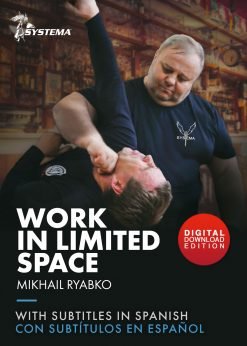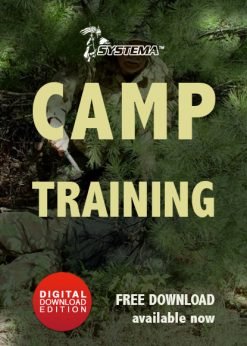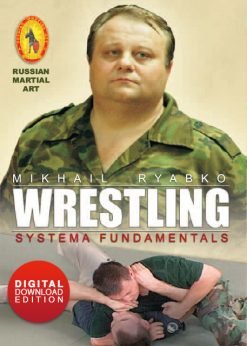Grabs & Counters (downloadable)
$9.95 – $14.95Price range: $9.95 through $14.95
In English with French translation.
In 2 Parts.
In this video, Vladimir teaches how to defend efficiently regardless of the grip strength, location or extent of limitation.
Watch TrailerGrabs & Counters
“When one body part is in a hold, the rest of the body should stay relaxed, mobile and ready to fight.“
Learn to escape but not lock yourself, remain ready to move and control the next attack.
Realize how much more powerful escapes are if they are done without emotions.
See the combative stretching of the arms and legs.
Practice the drills of sensing the attack.
“Never resist a hold but control it by walking or moving away from the pressure.”
Redirect the energy of the limb rotation to gain power or relax another joint to escape.
Use relaxation to release and escape.
From grabs to stabs. Apply the same hold escape principles to knife disarming.
Learn the difference between a punch that “belongs” to you, and the one that “belongs” to the recipient.
Watch the fascinating work inside a crowd – where two or more body parts are to escape simultaneously.
Part 1
- Friendly grabs
- Sport grabs
- Law enforcement and military grabs
- Psychological grabs
- Grip of an injury
- Wrist, elbow and shoulder stretches
- Psychological mobility
- Escapes from friendly holds
- First stage of holds in tension
- Second stage of holds in tension
- Reaction of the witness
- Move to avoid fear
- Grabs and multiple attacks
Part 2
- Move to avoid fear
- Shoulder mobility and power
- Free-movement escapes
- Position change and control
- Body awareness and agility
- “Locked” by seeing the weapon
- Grips to control
Part One: 60 min.
Part Two: 48 min.
| Format | 480p, 720p |
|---|---|
| Part | Part 1, Part 2 |
| Language | English, Spanish |
2 reviews for Grabs & Counters (downloadable)
Only logged in customers who have purchased this product may leave a review.
Related products
Downloadables
Downloadables
Downloadables
Downloadables
Downloadables
Downloadables
Downloadables

















Bruce Budner –
Vladimir gives a huge variety of ways to escape from holds and I enjoyed watching the variety of students from many countries. Tres bien!
Steven Prince –
I really enjoy this 2-part series. Working with grabs is such a great way to notice and release tension. By relaxing into freedom, I am able to breath and move effectively while remaining alert of the situation.